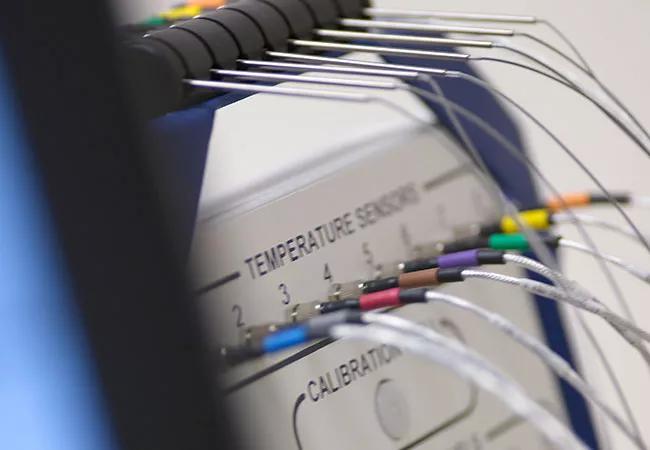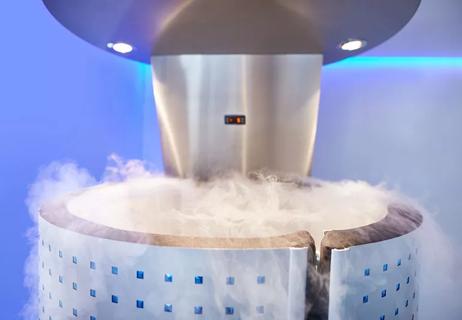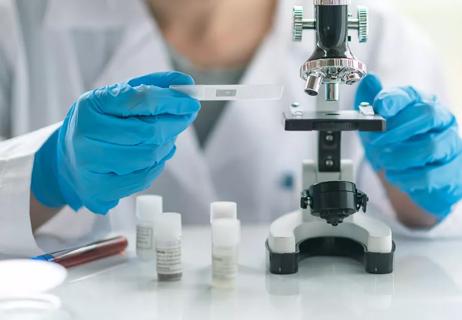Combining heat with chemo or radiation can shrink tumors

Heat can be an incredibly simple, yet powerful, way to boost the effects of chemotherapy and radiation treatments for cancer.
Advertisement
Cleveland Clinic is a non-profit academic medical center. Advertising on our site helps support our mission. We do not endorse non-Cleveland Clinic products or services. Policy
More than 5,000 years ago, doctors in ancient Egypt used heat to treat cancer. Today, cancer experts have refined the delivery of heat — a technique called hyperthermia — to improve radiation and/or chemotherapy outcomes for:
“Hyperthermia typically improves the effectiveness of radiation therapy by about 50 percent, compared with using radiation alone,” says radiation oncologist Jennifer Yu, MD, PhD.
“Rather than killing cancer cells outright, mild temperature hyperthermia ‘primes’ cancer cells to be more susceptible to radiation or chemotherapy. It can also target tumor cells that prove resistant to radiation and chemotherapy.”
Hyperthermia is different from “ablative” techniques, which use heat — from ultrasound waves, radio waves or lasers — to destroy cancer cells.
“In those treatments, the heat itself is high enough to ‘cook’ the cancer,” explains Dr. Yu. “In mild temperature hyperthermia, we use lower temperatures (109˚ to 110˚ F) to allow radiation therapy or chemotherapy to work better. This often shrinks the tumor.”
Advertisement
Hyperthermia makes a few different things happen during cancer treatment:
Cancer experts use different methods to heat tumors before or after radiation therapy.
They may use small microwave units to heat tumors located near the body’s surface. They may place probes within a body cavity, such as the rectum, to heat a tumor. Or they may surgically place a probe to heat a tumor deep within the body — for example, in the brain.
Cancer specialists typically do hyperthermia treatments twice a week over the course of radiation therapy. Each treatment takes about one hour.
Heat can also be delivered in different ways with chemotherapy.
Doctors may heat the blood that supplies a tumor, then deliver chemotherapy through the heated blood.
Or surgeons may heat chemotherapy drugs and circulate them through the abdomen and pelvis to treat tumors located there. The technique — called hyperthermic intraperitoneal chemotherapy (HIPEC) — is used to treat ovarian cancer metastases, for example.
Hyperthermia is typically done within about an hour of chemotherapy, except in HIPEC, where patients receive hyperthermia and chemotherapy at the same time.
The beauty of hyperthermia is that doesn’t harm normal cells and tissues. However, Dr. Yu’s patients often question whether hyperthermia might burn.
“Hyperthermia often feels like a heating pad. Most patients do not find it uncomfortable,” she says.
Wire thermometers are used so doctors can monitor temperatures and prevent overheating.
Yet even with this precaution, about 10 percent of hyperthermia patients develop temporary skin blisters. These typically heal quickly, she says.
In 2010, Duke University researchers found that adding hyperthermia to radiation treatment for breast cancer produced a 65 percent response rate, compared with a 42 percent rate for radiation alone.
“More recently, in a randomized clinical trial, researchers found that hyperthermia and radiation improved pain control for bone metastases, compared to radiation alone,” says Dr. Yu.
Researchers in her lab have also been exploring the potential of hyperthermia to treat cancer stem cells that promote the growth of brain tumors.
As time goes on, more and more studies will reveal the benefits of hyperthermia for those with cancer, Dr. Yu believes.
Advertisement
“Combining hyperthermia and radiation is a great treatment to consider if you have failed prior chemotherapy and radiation therapy,” she says.
Advertisement
Learn more about our editorial process.
Advertisement

Here’s how (and why) to ask your doctor about treatment goals, second opinions, clinical trials and more

Chemo cold caps may help you keep more of your hair during therapy

Practice meditation together, make a unique-to-them care package and embrace emotions

From a thoughtful note to a special pillow, these items are a win

How to create your own organizational system

Take these steps to limit the damage

The short answer from an exercise physiologist

New drugs are better at targeting cancer cells

Babies can get congested easily, but you can calm their cough by keeping them hydrated, using nasal drops and running a humidifier

Weight loss may cause loose, sagging skin and muscle loss to your rear

Several conditions, like vitiligo and fungal infection, can cause a loss of pigmentation, leading to white spots or patches on your skin